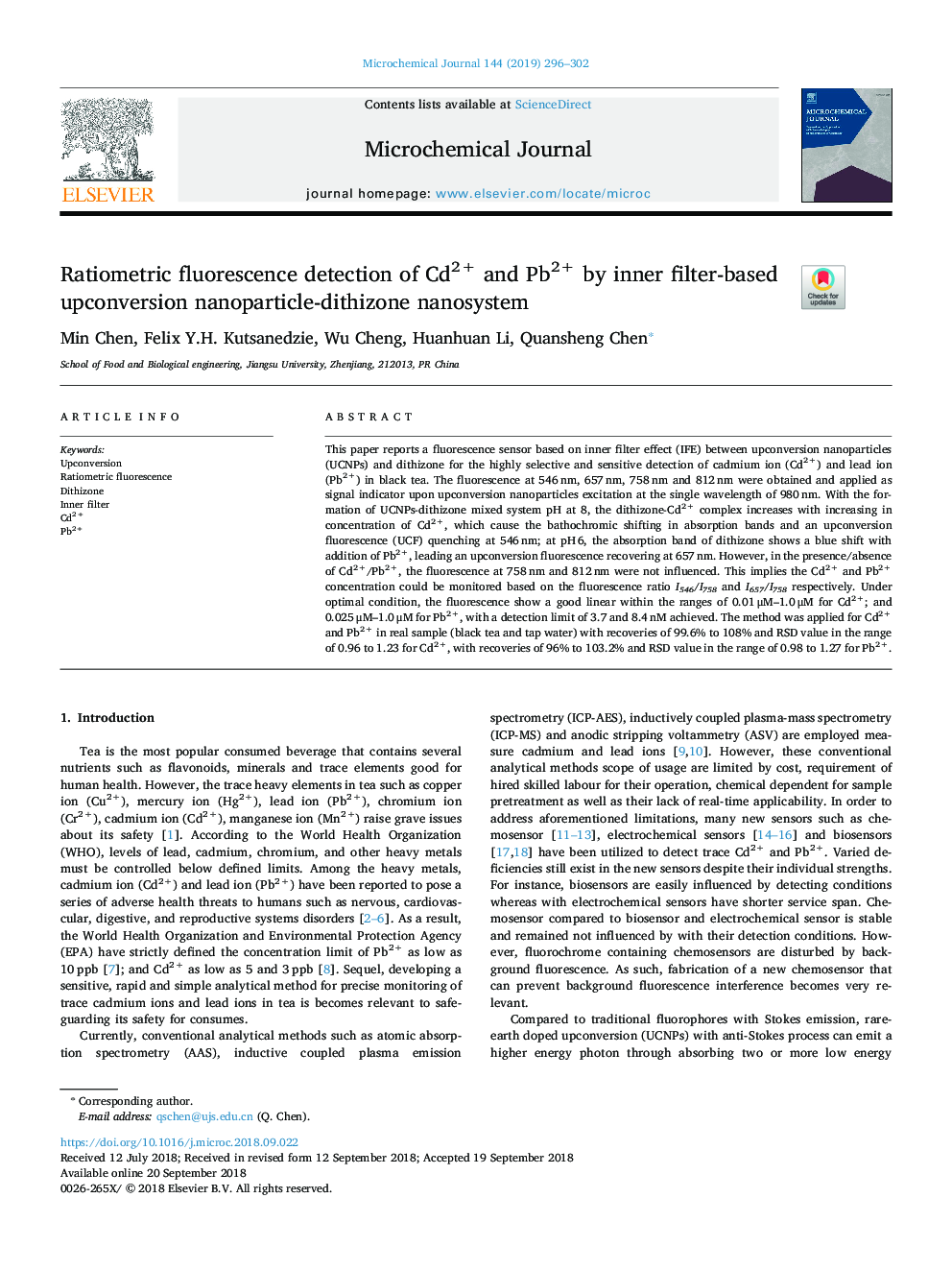| Article ID | Journal | Published Year | Pages | File Type |
|---|---|---|---|---|
| 11031245 | Microchemical Journal | 2019 | 7 Pages |
Abstract
This paper reports a fluorescence sensor based on inner filter effect (IFE) between upconversion nanoparticles (UCNPs) and dithizone for the highly selective and sensitive detection of cadmium ion (Cd2+) and lead ion (Pb2+) in black tea. The fluorescence at 546â¯nm, 657â¯nm, 758â¯nm and 812â¯nm were obtained and applied as signal indicator upon upconversion nanoparticles excitation at the single wavelength of 980â¯nm. With the formation of UCNPs-dithizone mixed system pH at 8, the dithizone-Cd2+ complex increases with increasing in concentration of Cd2+, which cause the bathochromic shifting in absorption bands and an upconversion fluorescence (UCF) quenching at 546â¯nm; at pHâ¯6, the absorption band of dithizone shows a blue shift with addition of Pb2+, leading an upconversion fluorescence recovering at 657â¯nm. However, in the presence/absence of Cd2+/Pb2+, the fluorescence at 758â¯nm and 812â¯nm were not influenced. This implies the Cd2+ and Pb2+ concentration could be monitored based on the fluorescence ratio I546/I758 and I657/I758 respectively. Under optimal condition, the fluorescence show a good linear within the ranges of 0.01â¯Î¼M-1.0â¯Î¼M for Cd2+; and 0.025â¯Î¼M-1.0â¯Î¼M for Pb2+, with a detection limit of 3.7 and 8.4â¯nM achieved. The method was applied for Cd2+ and Pb2+ in real sample (black tea and tap water) with recoveries of 99.6% to 108% and RSD value in the range of 0.96 to 1.23 for Cd2+, with recoveries of 96% to 103.2% and RSD value in the range of 0.98 to 1.27 for Pb2+.
Related Topics
Physical Sciences and Engineering
Chemistry
Analytical Chemistry
Authors
Min Chen, Felix Y.H. Kutsanedzie, Wu Cheng, Huanhuan Li, Quansheng Chen,
